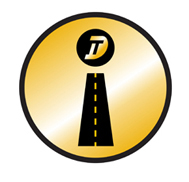

Left to right: Justin Wuest, Ben Daley, Tina Irwin and Roman Lara.
Construction DWRs made easy
Ben Daley, Tina Irwin and Roman Lara spent the summer in the Coeur d'Alene area piloting an AASHTOWARE program designed to make inspection both easy and mobile. Now they want to share it with other districts. 
The software called Mobile Inspector was previously offered by ITD but unknown to many project managers until D1 Resident Engineer Justin Wuest spoke to vendors at the last WASHTO Annual Meeting and learned of the program’s capacity to save time on Daily Work Reports (DWRs).
Mobile Inspector can run on cell phones and tablets, easily recording observations on weather events, equipment breakdowns, traffic- control staging, work progress, etc. in real time. It also allows inspectors to capture photos and even pair them with captions, which could aid with any claims months after project completion. 
Although inspectors have laptops to use in the field, they can be cumbersome to carry and use. They also lack voice-to-text capabilities. As a result, many inspectors were still taking handwritten notes and transcribing them after a long work day. That would sometimes conflict with the department's fatigue policy.
When Irwin switched to Mobile Inspector last July, she saved up to an hour each shift by not having to transfer notes at the end of the day.
“Now we can be out in the field and have our notes put into a diary in real time,” said Irwin, who has been inspecting with ITD since 2008. “There’s no guessing hours later about the full context of a conversation or what my notes in shorthand really mean.”
my notes in shorthand really mean.”
Mobile Inspector is made by the same company as AASHTOWARE, which is the program that stores DWRs, change orders and pay estimates for inspectors, project managers and consultants.
For the 2019 season, Wuest’s section borrowed tablets from the traffic group. Now the D1 inspectors and the Technology User Group are working with ETS to explore the possibility of supporting tablets in the future.
The group estimates a statewide cost savings of $134k and more than 5,400 hours of time saved through the innovation.
Published 1-24-2020